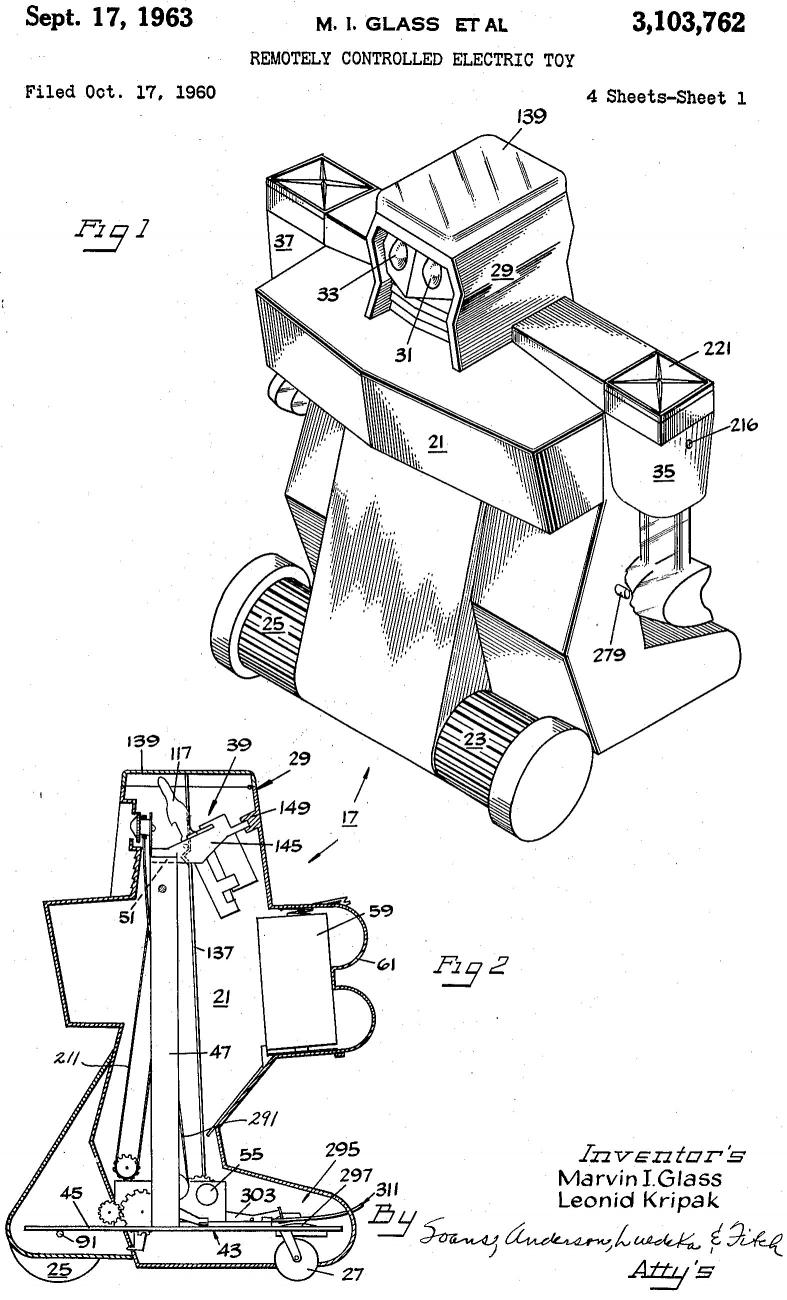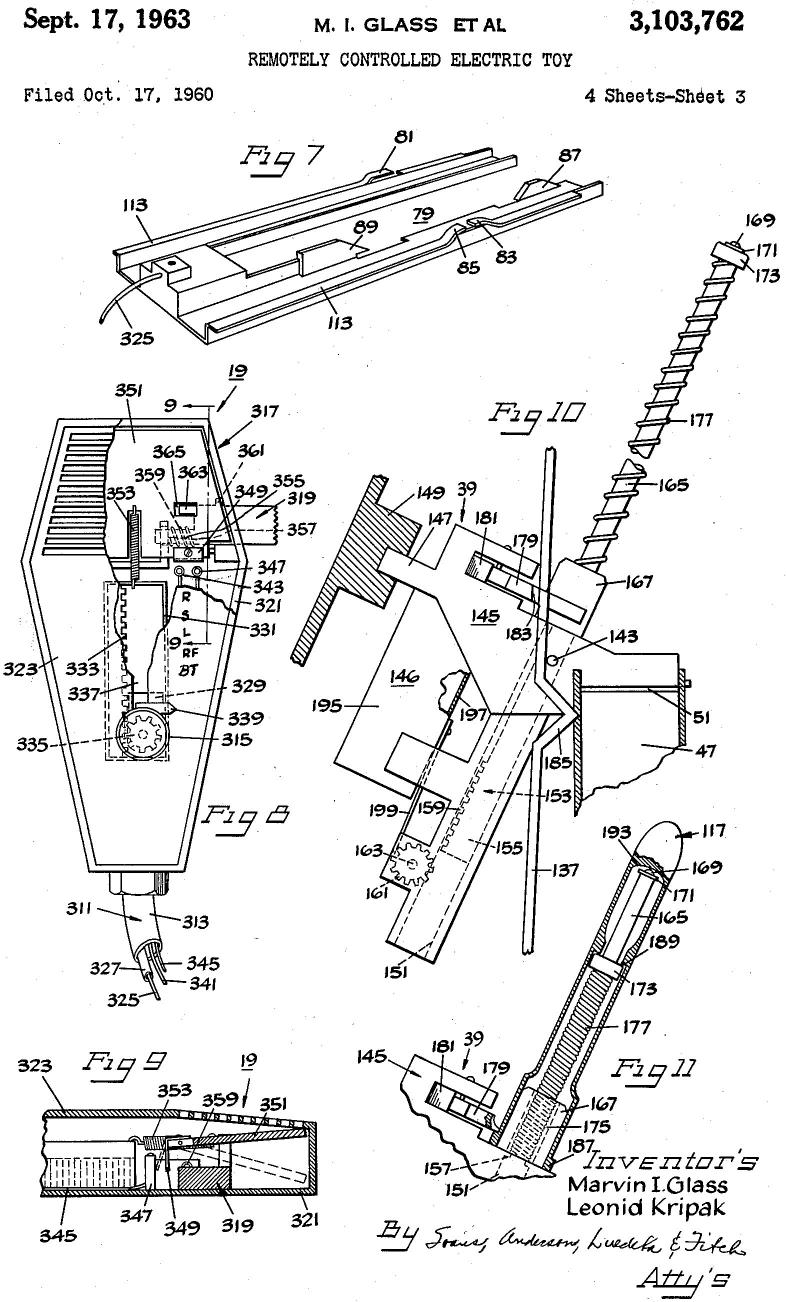
Voice control, so familiar these days - what was it considered in 1961? Science fiction, the arrival of which in the real world was in question? In principle, yes, but they have already tried to imitate this interface with the means available at that time. For example, in the Ideal product range, there was a model called Robot Commando with voice control. Or some other?
Watch the video. The huge robot moves, shoots rockets from his hands and from under the skull. Such huge objects in the movie - a stamp practiced until now. Then it turns out that it is not huge at all, just small layouts. The height of the toy is only half a meter, and the child controls it, pronouncing commands into the microphone. The eyeballs rotate continuously while the power is on, the other mechanisms are heard by the user.
Wait, but not even the seventies, when the pioneers on the opposite side of the ocean found out about the SRS - selective electronic relays, which allow to distinguish between two frequencies three or three commands like “STOOOO” and “IDII”. But there are more teams here! Maybe a command switch for selecting functions in a circle, like in Signal-1? It turns out, no, even simpler: on the remote there is a knob that rotates a gear that moves along a rack. That, in turn, transfers the bowden cable, familiar to you from the bicycle brake, to one of the positions, switching the modes of the base unit. It is powered by three D elements (373, R20), and there are no batteries in the console.
Link to the entire patent .

Together with the cable laid two conductors connected to the relay. No, not selective, not electronic, and not even acoustic. And to the simplest contact flow switch. Unlike a loudspeaker, a person together with sound vibrations forms a “constant component” - that same stream. To make it more pronounced, the instruction recommends pronouncing the words like this: “ffffperod”. After operation, the relay contacts remain closed, for their opening it is necessary to transfer the switch located under the “microphone” to the off position. Then it is turned back on and the sensor is ready to receive the next order.
Do you want such a device on the shelf? In working condition you will not sell it cheaply. You decide to build an analogue - do not forget a little detail: a periodic beep. Like a bike "Friend", only very short. But the “Druzhka” horn is polyethylene, and this one is made of rubber hardening with time. Here it is already replaced.
Pay attention: the user does not say anything, but, having hissed on the flow switch once and without unlocking it with a switch, switches the functions with a pen. And then unlocks the switch. So, too, can be. It is also clear that before launching into production, the model was subjected to a slight restyling: a console of a different shape, opaque hands and a skull.
Someone will say that we face a snag, because the management is not voice. But in 1961 this made a greater impression on 10-year-olds than today - real voice control.
For us, this is a great lesson from the KISS principle. Admit it, today, when developing such a model, you would have grabbed the “raspberry”, Tensor Flow, drivers and actuators. Anyway, if for production.
And if for yourself?